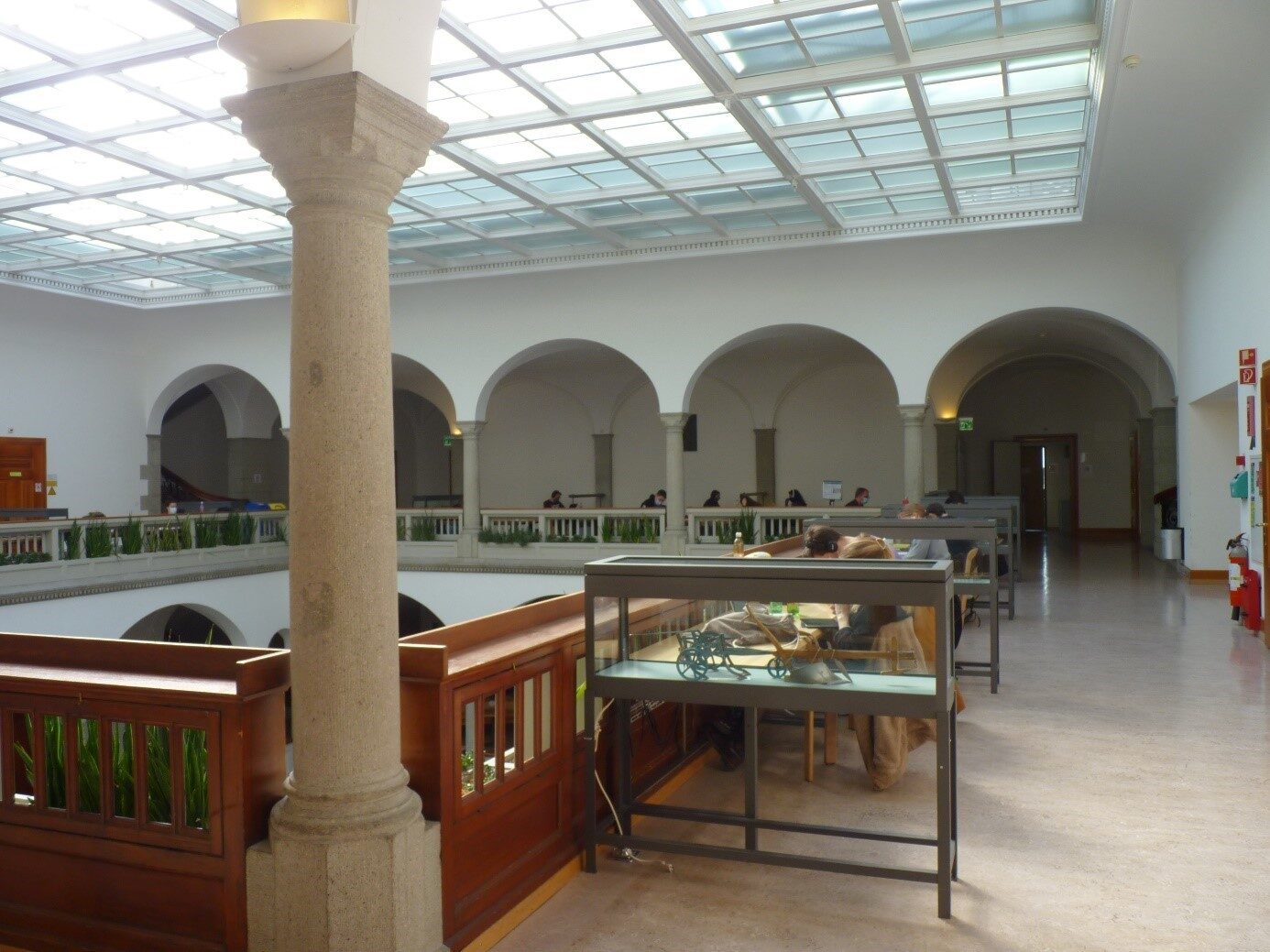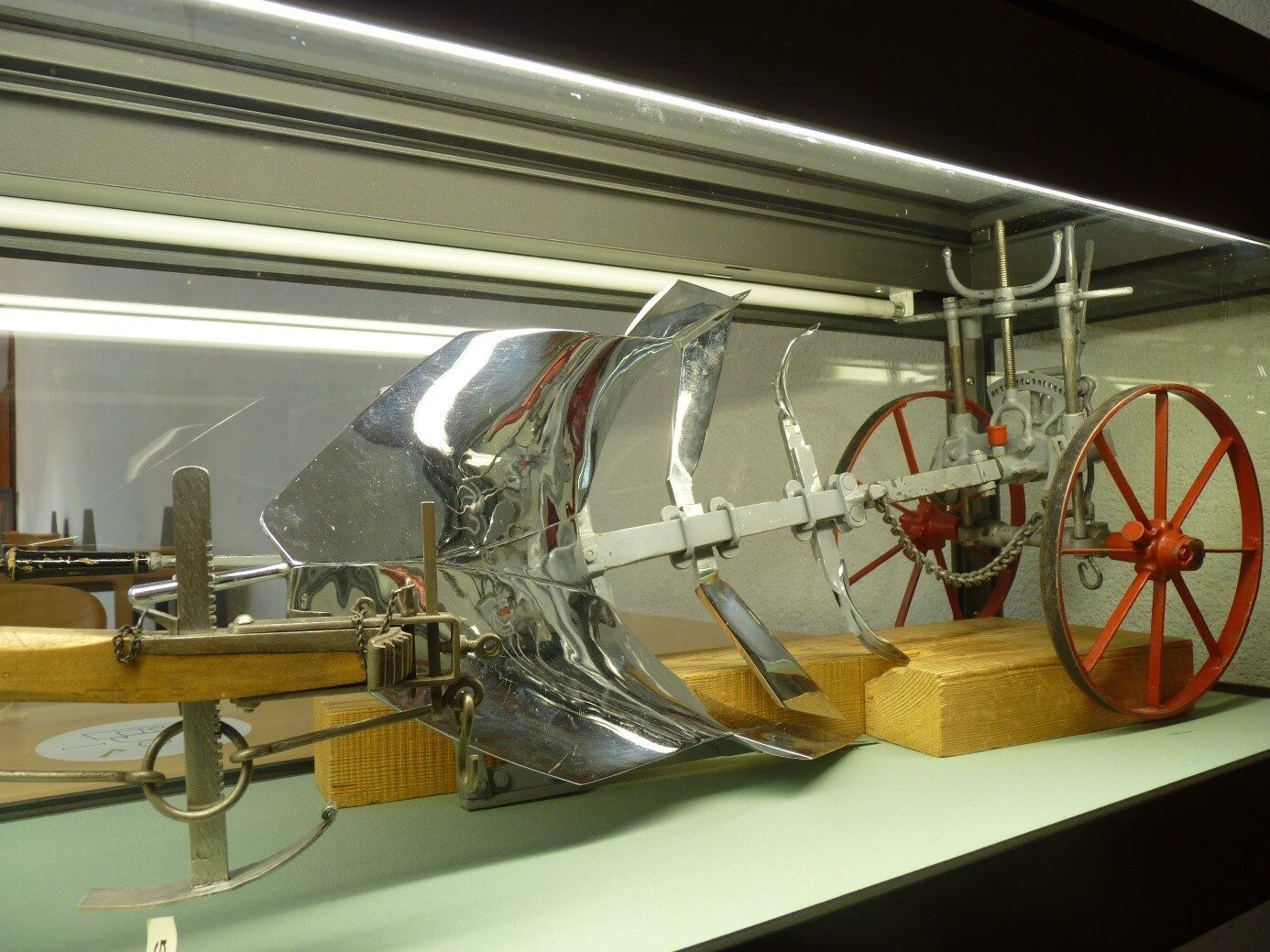The renovation of the LFW
And the subtle shenanigans at the handover ceremony
The LFW was converted for six years from 1987 to meet the modern requirements of the agricultural science disciplines also in the future. Shortly before the handover ceremony, the newly installed showcases were equipped with model ploughs as a kind of prank, which can still be admired in the LFW today.
The agricultural and forestry building, built in 1874 and extended in 1915 while preserving the neoclassical style, no longer met modern requirements in the 1980s. At the end of the 1980s, laboratories were needed that met the high demands of the emerging molecular biology. In a construction project with a volume of more than CHF 30 million, conversions and installations were realised that made the LFW shine in new splendour on the outside and inside
A fundamental metamorphosis
The conversion of a listed building is an immense challenge. How do you transform a building with basic equipment for teaching and research into state-of-the-art lecture halls and laboratories? The cellars of the A floor, where actress Liselotte Pulver still drank wine with the doctoral students of chemistry and agriculture, were now equipped with growth cabinets for controlled plant cultivation. From 1987 to 1993, the building was shrouded in noise, dust and stench; the conversion, teaching and research continued intensively in parallel – much tolerance was needed. This was thanked by the university management with an appropriate celebration when the building was returned to the users in 1993 – a nice memory.

The feat of Dr. Fritz Schwendimann
A special touch at the celebration was given by Dr Fritz Schwendimann, among others. In his almost half a century of work at the institute (from 1950 to 1995), he became one of the original figures in Swiss arable farming, highly regarded by all agronomists for his competent support, but little known within ETH because of his refusal to co-author. He was not only an expert in all questions of a broad subject area, but also always ready for subtle jokes. His feat was the move of the model ploughs into the LFW. Since the conversion, large showcases have been installed between the desks on floors C and D. This was seen as a great opportunity to present various subjects of biology and agricultural plant sciences to students and visitors. For 18 months until the celebration, however, no decision had been made as to who was to exhibit there, when and what.
And suddenly, the ploughs were there
On a Monday before the big inauguration ceremony, all the showcases were suddenly filled with model ploughs from the former Plough Museum in Eschikon, which had been dissolved shortly before. Fritz was not averse to change, but also persistent when he thought something was good. At the weekend, he had probably single-handedly managed the move of the most beautiful models to the LFW. He himself never commented on it. But everyone was relieved that at the handover ceremony the showcases were filled with these symbols of arable farming. It was only noted that these placeholders would allow thinking about intelligent solutions. The process is apparently not yet complete. And so the ploughs are still in the LFW today.
